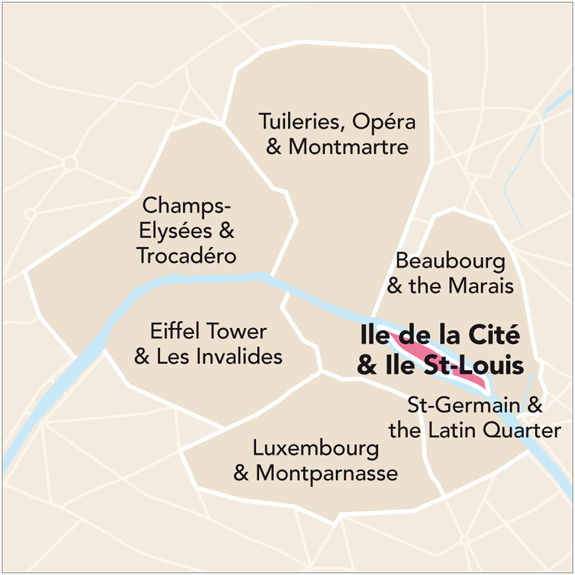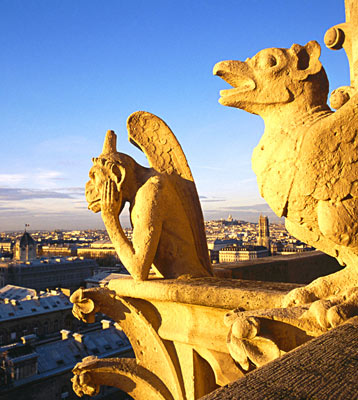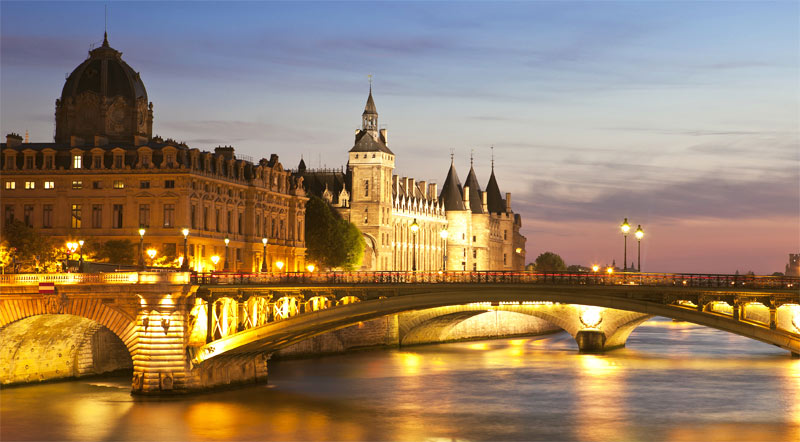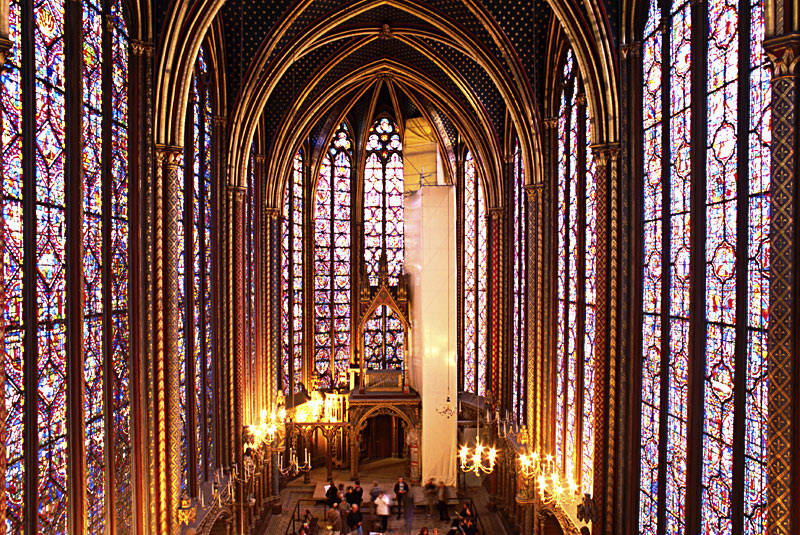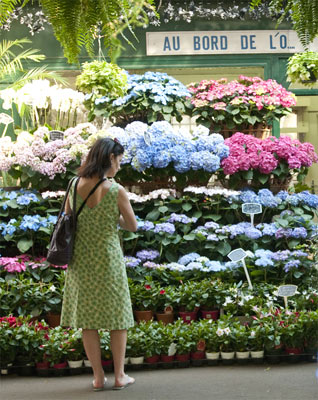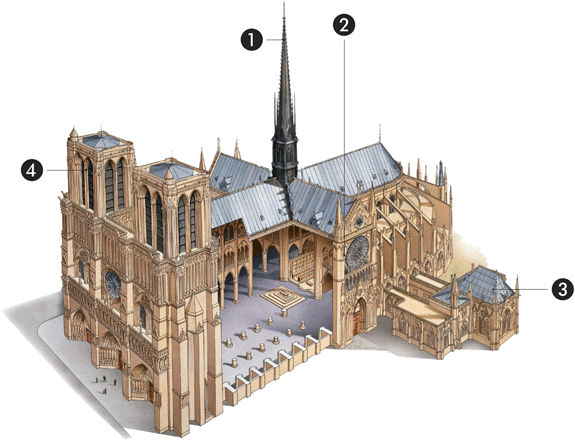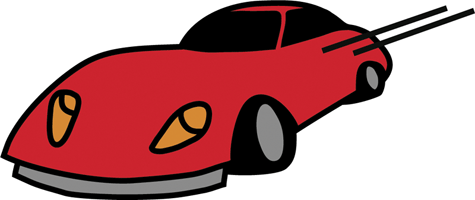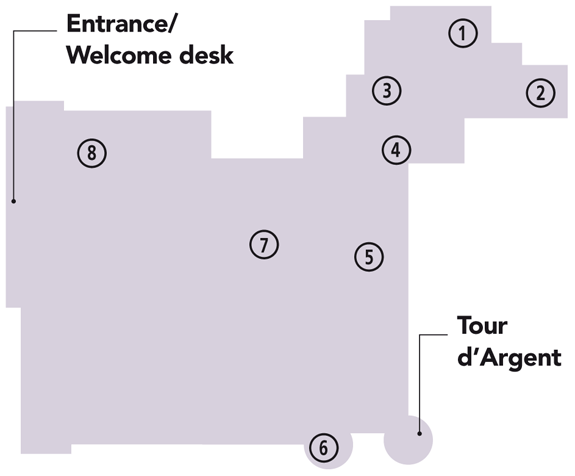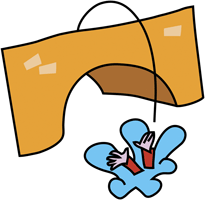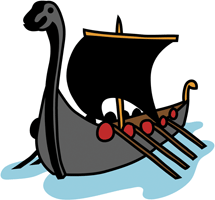< Ile de la Cité & Ile St-Louis
Notre-Dame and Around
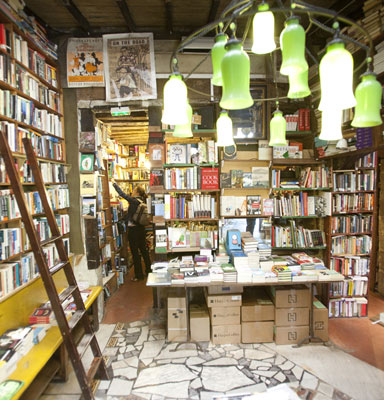
Bookstore, reading library and literary meeting-place Shakespeare and Company
No fewer than 13 bridges, including the famous Pont Neuf, lead across to the Ile de la Cité and Ile St-Louis, the two small islands on the Seine that are both a pleasure to explore on foot. The views here are fantastic at any time of the day but are more magical in the evening when there are fewer tourists around. Many of the sights are outdoors, so choose a fine day and bring a picnic. On Sundays and public holidays, the Voie Georges Pompidou on the Seine’s Right Bank is closed to traffic, and a haven for Rollerbladers and cyclists.
1. Notre-Dame
2. Statue of Charlemagne
3. Petit Pont
4. Marché aux Fleurs et aux Oiseaux & Quai de la Mégisserie
5. Ile St-Louis
6. Paris-Plages on the Right Bank
7. Hôtel de Ville
8. Conciergerie
9. Sainte-Chapelle
10. Pont Neuf
11. St-Germain l’Auxerrois
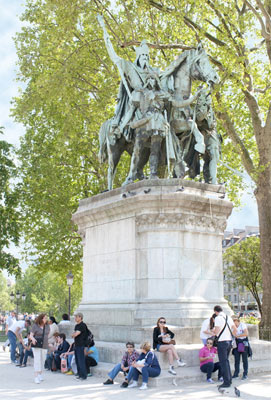
Statue of Charlemagne near Notre-Dame
1. Notre-Dame
History, hunchbacks and gargoyles
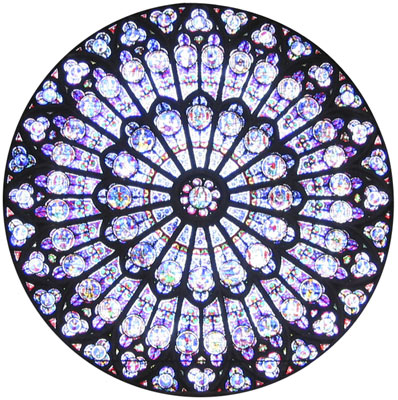
Stained-glass rose window, Notre-Dame
Home to Victor Hugo’s fictional hunchback, Quasimodo, Notre-Dame is over 800 years old. Built on the site of a Roman temple, it took over a century to complete and is covered with swooping buttresses and funny-faced gargoyles. During the Revolution it was looted and used as a wine warehouse. The cathedral has witnessed many dramatic events in French history – such as when, in 1804, Napoleon crowned himself Emperor here instead of waiting for the Pope to do it for him.
Key Features
1. The spire Added by the architect Viollet-le-Duc in the 19th century, the spire soars to a height of 90 m (295 ft).
2. Rose windows Their colours are magnificent on a sunny day. Louis IX donated the southern window.
3. Crown of Thorns Viollet-le-Duc designed the gilded, diamond-encrusted shrine that holds this and other famous relics on display in the Treasury.
4. Biblical characters Covered in easily recognizable biblical characters, the façade was known as the “poor man’s bible”. When the cathedral was built, most Parisians were unable to read.
• Chancel screen In the centre of the church, the chancel screen tells the story of the life of Jesus like a medieval comic strip.
• Gargoyles and chimeras Glare up at these creatures on the façade and in the tower where they sit hunched over.
• Gothic masterpiece Finished in 1330, the cathedral is 130 m (430 ft) tall and features flying buttresses, a large transept and 69-m (228-ft) high towers.

Left
Gothic masterpiece Middle Gruesome gargoyle
Right Chancel screen
Kids’ Corner
Find out
-
The grimacing gargoyles are not just for decoration. Can you guess what they do?
-
A gargoyle and a chimera – what is the difference between the two?
-
Climb up the 387 steps of the north tower. At the second level you will see a chimera holding its head in his hands and doing something cheeky. What is it?
Prowling man-eaters
In the winter of 1450, a pack of man-eating wolves terrified Parisians and killed 40 people before being stoned to death in front of Notre-Dame.
Them bones…
In the Middle Ages, pilgrims would travel miles to see bits of saints’ bodies. Kings had treasuries stuffed with holy bones and drops of blood to show how pious, as well as how rich and powerful, they were. King Louis IX was so keen to own the Crown of Thorns worn by Jesus when he was crucified, that he paid the equivalent of half of all the money spent in France in a whole year. Famous for his religious devotion, he was made a saint.
2. Statue of Charlemagne
Master of all he surveyed
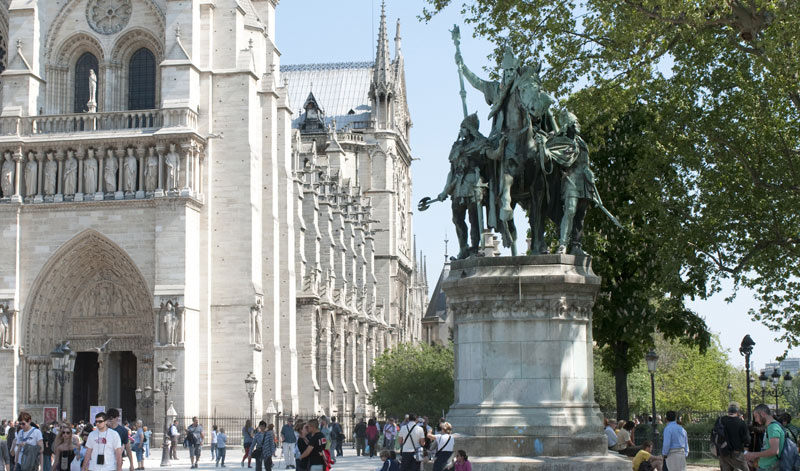
Charlemagne’s statue stands tall in Square Jean XXIII, next to Notre-Dame
An imposing statue of Charlemagne (reigned 768–814) stands on the southern side of the square next to Notre-Dame. Charlemagne ruled over vast swathes of territory that today make up modern-day France and most of Central Europe, conquered by the Franks thanks to their powerful cavalry. His campaigns in Spain are recounted in the epic poem, La Chanson de Roland (The Song of Roland), the oldest surviving major work in French literature. Charlemagne was stately, fair-headed and tall, with a disproportionately thick neck; he fathered 20 children. A great patron of scholars from all over Europe, he himself never learnt to read or write. Although his statue occupies pride of place on Ile de la Cité, he only ever visited Paris twice; after the death of his father, Pepin, he moved the capital to Aix-la-Chapelle, or Aachen as it is known in German, where he liked to take the waters.
Kids’ Corner
Look out for…

1. The padlocks on the Pont de l’Archevêché on the eastern tip of the Ile de la Cité. Courting couples lock their love together for eternity by attaching a padlock to the wrought-iron railings and throwing the key in the Seine.
2. The Pont au Double: who is the famous book character that fell in the river here?
Bulldozed away
In the 19th century, the spider’s web of 450 streets on the Ile de la Cité was razed to the ground and 25,000 poor people were driven from their homes. Look for the plaques on the square in front of Notre-Dame that mark where the streets used to run.
Police story
On the uniforms of PJ (Police Judicaire) officers, whose headquarters are located on Ile de la Cité, you can see an emblem resembling a tiger’s head. This is because the PJ was created with the support of the 72nd Prime Minister, Georges Clemenceau, who was nicknamed Le Tigre (the tiger).
3. Petit Pont
Follow in the footsteps of Babar and Madeline
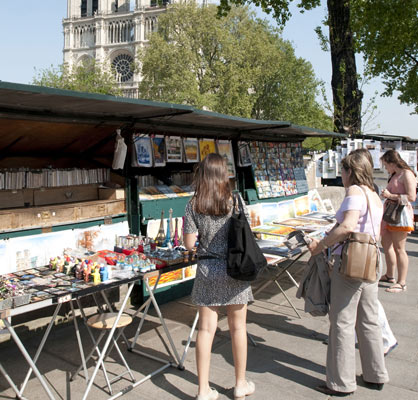
Book stalls along Quai de Montebello, with Notre-Dame in the background
The Romans built the first wooden bridge across the Seine at the exact spot where the modern Petit Pont spans the river, which is also the narrowest crossing point. The bridge was washed away by floods or destroyed by fire at least 14 times and was covered in teetering houses until 1719. The current bridge dates back to 1853. In Roman times, it linked the temples and villas on the Ile de la Cité to the town of Lutetia, which extended up to Mont-Ste-Geneviève, where the baths, the theatre and the forum were located. More than 8,000 people lived in Lutetia, which was laid out on a regular grid plan. Rue St-Jacques, which runs south from the bridge, is one of the city’s oldest streets, and follows the line of the main north-south axis of the Roman town, the cardus maximus.
The Seine’s banks along Notre-Dame grace the pages of many children’s books. Jean de Brunhoff’s gentle King Babar and Ludwig Bemelmans’ spunky heroine Madeline have both had adventures here.
4. Marché aux Fleurs et aux Oiseaux & Quai de la Mégisserie
Screeching parrots, butchers, doctors and detectives

The Marché aux Fleurs, Paris’s main flower market
Paris’s biggest and best flower market spreads out daily on Ile de la Cité. On Sundays, caged birds and little bunnies join the exotic cacti and colourful flowers. Across the river on Quai de la Mégisserie is the city’s pet-shop corner, full of ducks, chicks and other little creatures.
In the Middle Ages, the Place Louis Lépine was where the butchers carried out their trade, and the area stank to high heaven. There was also a small Jewish ghetto, while in Roman times, St Denis, the patron of Paris, was imprisoned here.
On the eastern side of the square is Hôtel Dieu, Paris’s oldest hospital. Founded as early as the 7th century, it took care of the poor and sick, but often bred more diseases than it could cure, with up to five patients to a bed. Many important medical discoveries have been made here, and this was where one of the first surgeons, Ambroise Paré (1510–90), wielded his scalpel. Today it is home to the city’s bustling Accident and Emergency Department.
Just southwest of the market is No. 36, Quai des Orfèvres, the headquarters of the Paris police force known as PJ 36. Founded in 1812, it provided the model for Scotland Yard and the FBI and inspired a whole gaggle of films and detective stories, including Inspector Maigret.
5. Ile St-Louis
A village in the heart of a city
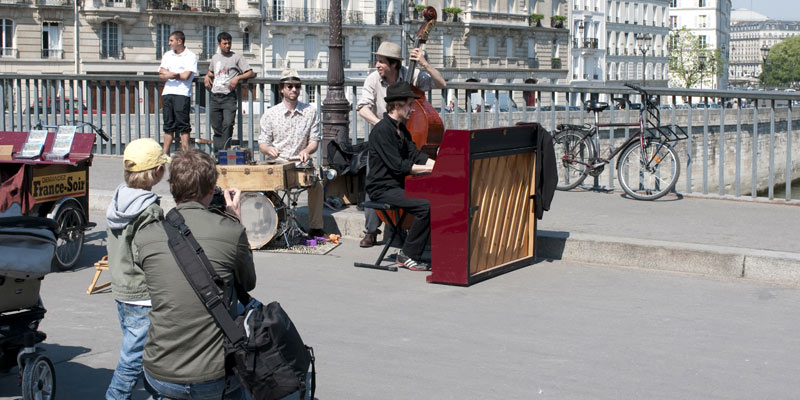
Entertainers on Pont de Sully, at the eastern end of Ile St-Louis
Until 1614, when the 13-year-old Louis XIII was persuaded that building some stylish town houses was a good idea, Ile St-Louis was known as the Ile des Vaches after the cows that grazed here. It remains a tranquil place with a village-like feel, thanks to its narrow streets. Rue St-Louis-en-l’Ile is a foody paradise, so there is a lot of grazing going on still. Lined with historic houses, it is a fun place to walk and peruse the shops. Look out for the dragons on No. 51, and No. 54, which was once a real tennis court.
Many famous people have lived on the Ile St-Louis, with its tree-lined quays, among them the philosopher Voltaire, the scientist Marie Curie and the French president from 1969–74, Georges Pompidou. In 1924, one resident, the poet Roger Dévigne, went as far as to declare it an independent republic.
Kids’ Corner
Look out for…
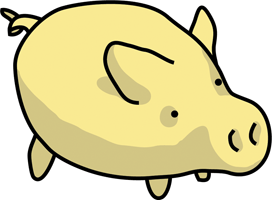
1. Where can you find a marzipan pig on Île St-Louis?
2. The dragons supporting the balcony of No. 51 Rue St-Louis-en-l’Ile.
Peep Peep Pompidou
President Pompidou lived at 24 Quai de Béthune on Ile St-Louis, in the only modern house on the street – but the island was too sleepy for him. When he looked out of the window he dreamt of space-age cars shooting through tunnels. He ordered a motorway, the Périphérique, to be built around Paris, creating a new “city wall”. He also built a fastlane highway along the Right Bank of the Seine, the Tour de Montparnasse skyscraper and the crazy but fun
Centre Pompidou.
6. Paris-Plages on the Right Bank
Sand, sun and deck chairs
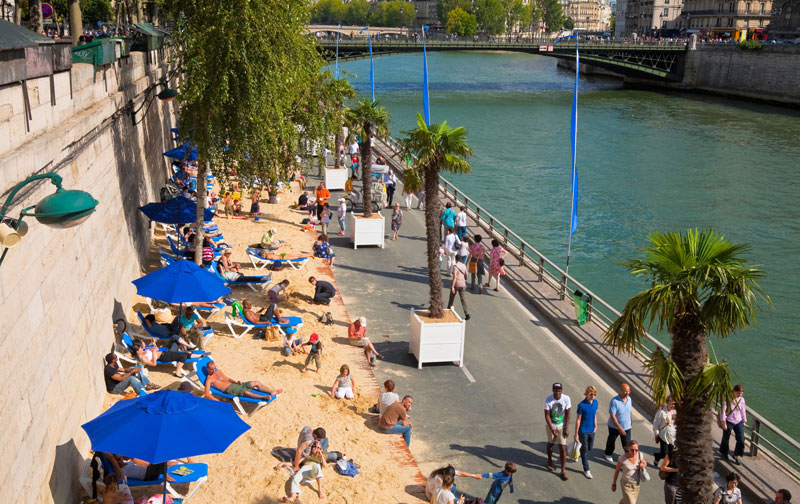
Paris-Plages, with deck chairs and parasols lined up along the Seine
Thanks to the modernizing zeal of President Pompidou, there has been a busy highway running along the Right Bank since the 1960s, but at the height of summer, for four weeks in July and August, everything changes. The cars disappear and the fun begins on this stretch of the Right Bank, running from the Louvre to Pont de Sully. Deck chairs line the Seine on an artificial sandy beach and there are street entertainers, water features, plenty of activities for children and a host of cafés. This area is closed to traffic on Sundays and public holidays all the year round.
The views here across from the river to the islands are beautiful and undeniably romantic. The Quai aux Fleurs, on the northeastern side of Île de la Cité, is famous for the medieval romance between 39-year-old scholar Pierre Abélard and 17-year-old Héloïse, the niece of a canon. When her uncle found about the relationship he was furious, and locked her up in a convent. Their passionate letters of love and loss are legendary.
Close by is Square de la Tour St-Jacques. The tower is all that now remains of the Church of St-Jacques, which was destroyed in the Revolution.
7. Hôtel de Ville
Rebuilding, organizing and getting down to business
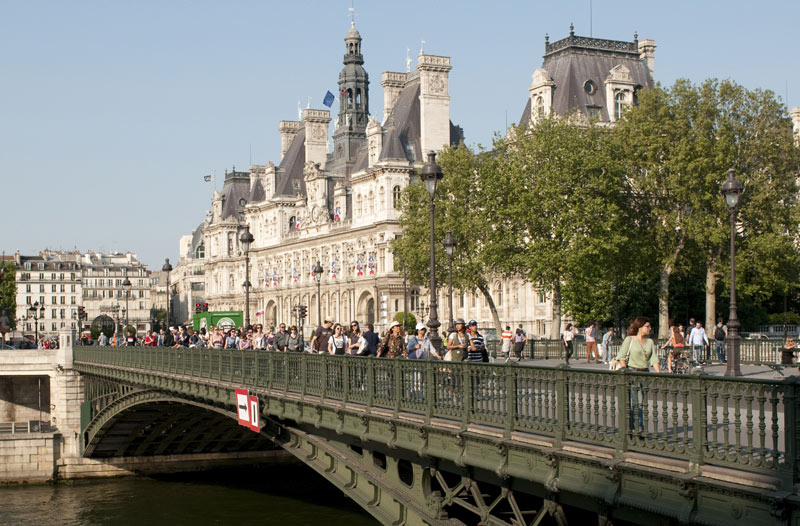
Hôtel de Ville (Town Hall) across the Pont d’Arcole
The Hôtel de Ville, across Pont d’Arcole from Ile de la Cité, occupies what has been the site of the town hall since 1357, when the city merchants first took charge of organizing Paris. The original building was replaced with a grand, Renaissance-style city hall that took nearly a century (1533–1628) to build. This was burnt down during the Paris Commune of 1871, but its replacement was built in virtually the same style, covered in sculptures of famous Parisians made by some of the city’s most renowned artists. The 18th-century mathematician Jean le Rond d’Alembert was sculpted by Auguste Rodin in a work that graces the front façade.
Since ancient times, the Right Bank was a place where business was conducted and goods were unloaded. Workers would come to the Place de l’Hôtel de Ville, then called Place de Grève, looking for work. The expression en grève (on strike) originally denoted someone who was not working.
In late June, the Place de l’Hôtel de Ville is the start- and end-point of the 8-km (5-mile) waiters’ race, where restaurant staff race round the streets with full trays of drinks. To make it even harder, they run barefoot.
Kids’ Corner
Look out for…
Where can you see a boat with three masts, the symbol of Paris? The city motto is fluctuat nec mergitur (it sails but does not sink).
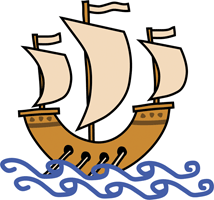

8. Conciergerie
Fairytale towers fit for a torturer
If anywhere in Paris must be haunted, this is it. The Conciergerie is the oldest remaining part of France’s original royal palace, rebuilt by Philippe le Bel, or Philip the Fair, around 1300. After Charles V moved to the Louvre, it became a rat-infested prison synonymous with death and torture under the watchful eye of a concierge, or steward. In 1793, the Revolutionary Tribunal condemned thousands to death here during the Reign of Terror. The Revolution’s most prominent prisoners – including Marie Antoinette, Danton and Robespierre – all spent their final night here before being taken to the guillotine. The Conciergerie remained a prison until 1914.
Key Features
1. Room of the Doomed Prisoners walked through this room, nicknamed the Salle des Perdus, before being taken to the scaffold.
2. Chapelle des Girondins The Girondins, a group of moderates, executed by the radical Jacobin revolutionaries, held a feast here the night before their execution.
3. Marie Antoinette’s Chapel A chapel marks the spot where the famous queen was held prisoner for nine months.
4. Grooming Room The Salle de Toilette is where prisoners were stripped of their belongings and had their hair shaved.
5. Rue de Paris Named after “Monsieur de Paris”, the nickname of the executioner, this is where the poorest prisoners slept on straw crammed in tiny cells.
6. Tour de César and Tour d’Argent The former tower led to the king’s apartments, while the crown jewels were stored in the latter.
7. Salle des Gens d’Armes The largest surviving medieval hall in Europe, it was used as a dining room for the king’s servants and could hold up to 2,000 people.
8. Black marble table In the Middle Ages, the king meted out justice at this table in the main hall.
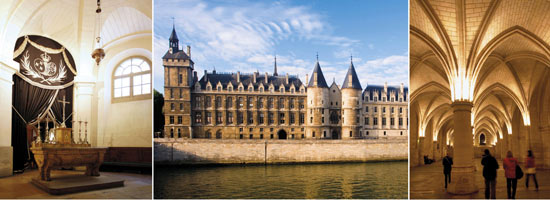
Left
Chapelle des Girondins Middle Exterior of the Conciergerie Right Salle des Gens d’Armes
Kids’ Corner
Find Out More…
-
A famous French queen was imprisoned in the Conciergerie for nine months before she was executed. Who was she?
-
The clock on the Tour d’Horloge by the Pont au Change, put up in 1370, is the oldest clock in Paris.
-
See if you can find the marker showing the height of the flood (inondation) of 1910, in the Salle de Garde.
Beware of the concierge!
Today, almost all fancy Paris apartment blocks have concierges. Watch out, make too much noise and they will tell you off!
The deathly towers
The Conciergerie still retains the Bonbec Tower, site of the 11th-century torture chamber, where torturers once loosened the tongues of their victims until they babbled.
A much-hated queen
Foreign and considered frivolous, Marie Antoinette was hated by the Parisians, and especially women. The queen was imprisoned in the Conciergerie for several months. Before she was beheaded, Marie Antoinette was paraded alone in an open cart around the streets, and jeered by the crowd.
9. Sainte-Chapelle
Psychedelic heaven
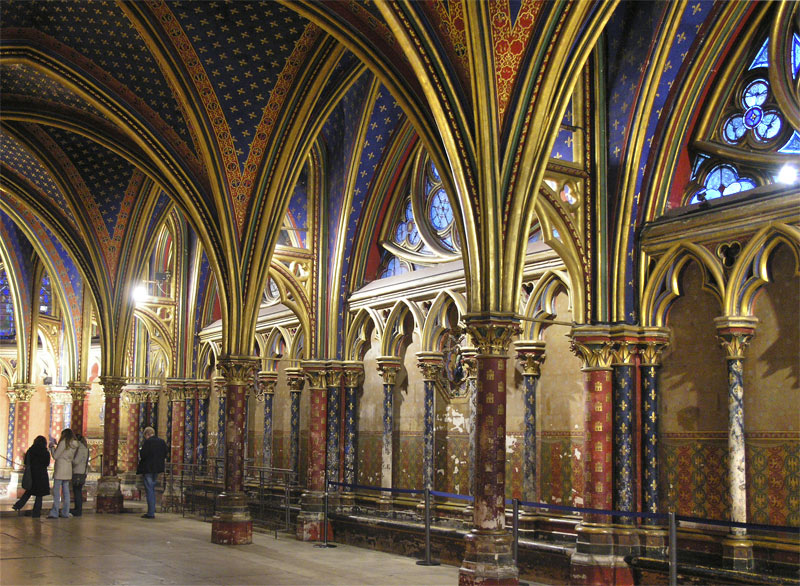
Stunning interiors of the magnificent Sainte-Chapelle
The only French king to be made a saint, the devout Louis IX was a keen collector of relics. In 1239, he built the breathtakingly beautiful Sainte-Chapelle to house his prize acquisitions, including the Crown of Thorns now kept at
Notre-Dame and a fragment of Christ’s Cross. The construction of this architectural masterpiece, which was built in just ten years, also served to express the absolute power of the king by the right of God.
Built in Flamboyant-Gothic style, the chapel has some of the finest medieval stained-glass windows in the world. A riot of dazzling electric colours on a sunny day, the 15 giant windows tell the stories of the Bible in a magical illuminated cartoon strip that soars up into the starstudded roof. The stunning 33-m (108-ft) high spire seems to point straight to heaven while the Rose Window ominously depicts the Day of Judgement.
Kids’ Corner
Look out for…
The 12 pillars in the Upper Chapel of Sainte-Chapelle, which are decorated with beautifully carved statues. Can you guess who they are?
10. Pont Neuf
The old new bridge
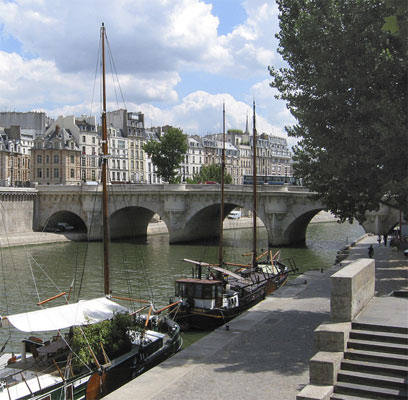
Pont Neuf, Paris’s oldest bridge, spanning the Seine
Built in 1607 during the reign of Henri IV, the Pont Neuf, or New Bridge, is, ironically, the oldest surviving bridge in Paris. The first stone bridge to be built in the city, it was wider than any other bridge in Europe and also had a new invention – pavements. It soon became all the rage to stroll across it, among a bustling mix of entertainers, tradesmen, dentists and tricksters. In the middle of the bridge is a statue of Henri IV which, in 1618, was the first royal statue to be erected in the city. It was destroyed during the Revolution, but was recast in the 19th century. Steps from behind the statue lead to the Square du Vert-Galant, located at the spot where the Pont Neuf crosses Ile de la Cité, halfway across the river. The square was built by Henri IV, nicknamed Vert-Galant (Gay Blade), who enjoyed coming here for parties on summer evenings. Originally an island called the Ile des Juifs, this is where the leader of the Templars, Jacques de Molay, was burnt at the stake in 1314.
Kids’ Corner
Look out for…
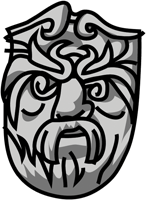
1. The funny faces on Pont Neuf. They are modelled on Henri III’s courtiers.
2. The Rue du Chat-qui-Pêche (“Street of the Fishing Cat”). This the narrowest street in Paris. It runs off Quai St-Michel, not far from the Pont Neuf.
Bridge over troubled waters
When the Pont Neuf was being built it was a popular sport for young men to leap across the ramparts, although many slipped and drowned in the Seine. Even Henri IV had a go.
Hide and Seek
For years it was believed that a statue of Napoleon was hidden inside the statue of Henri IV on the Pont Neuf. But, when it was opened up in 2004, it contained just four boxes of papers detailing how the statue was remade.
11. St-Germain l’Auxerrois
Rivers of blood
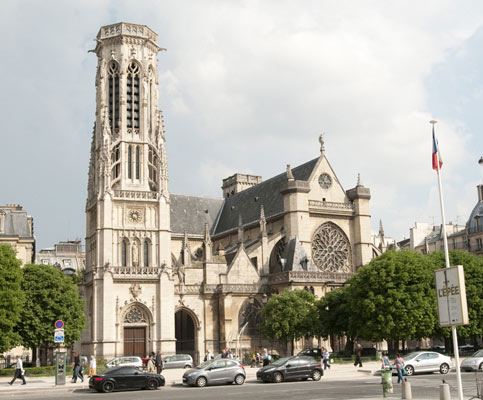
View of the imposing church of St-Germain l’Auxerrios
A jewel of Gothic architecture with a fantastically elaborate doorway, the church of St-Germain l’Auxerrois was built in 1435. The church is famous for its association with the grisly St Bartholomew’s Day Massacre. In 1572, the country was ruled by a weak and indecisive Catholic king, Charles IX, whose mother Catherine de Medici had plans to destroy the growing power of the Protestant community. On 23 August, the eve of the wedding of the Protestant Henri of Navarre, who would later become Henri IV, and Marguerite de Valois, she ordered the church bell to be tolled, which was a signal for a full-scale massacre to begin. Thousands of men, women and children who had come to witness the wedding were murdered and the Seine turned red with Protestant blood.
Kids’ Corner
Black sails on the Seine
Many raiders and invaders have left their mark on the city. On 28 March, AD 845, a fleet of 125 black dragon ships carrying Vikings rowed up the Seine and raided the Ile de la Cité. In AD 856, the Vikings struck again and in January AD 861 they burnt down the church of St-Germain-des-Prés. Then, in AD 885, 30,000 Norsemen, packed into 700 ships, laid siege to the city for 12 continuous months. Charles the Simple handed over Normandy to them to stop them from attacking Paris.
